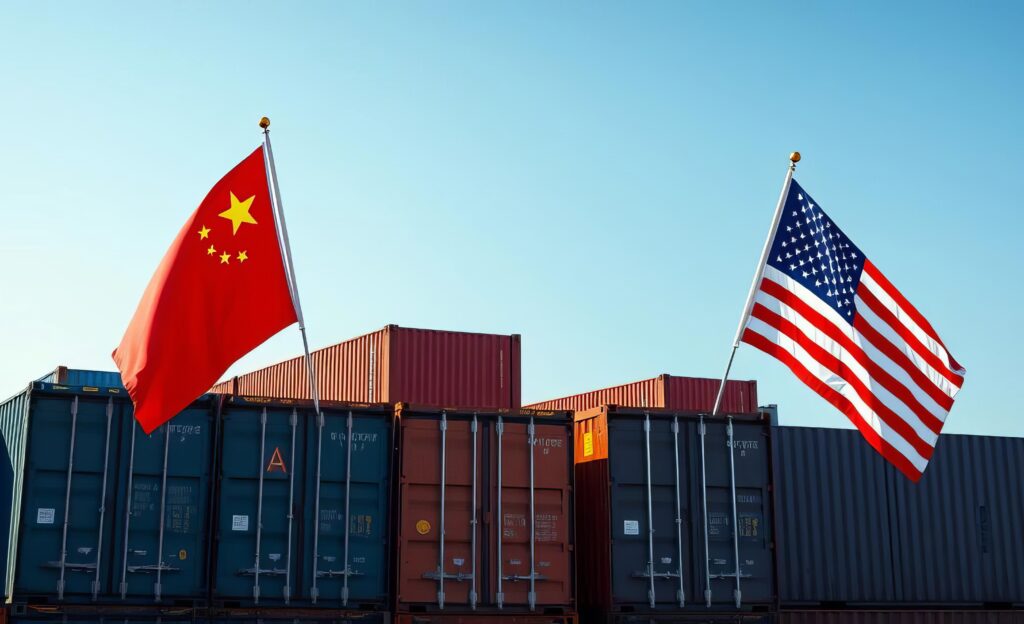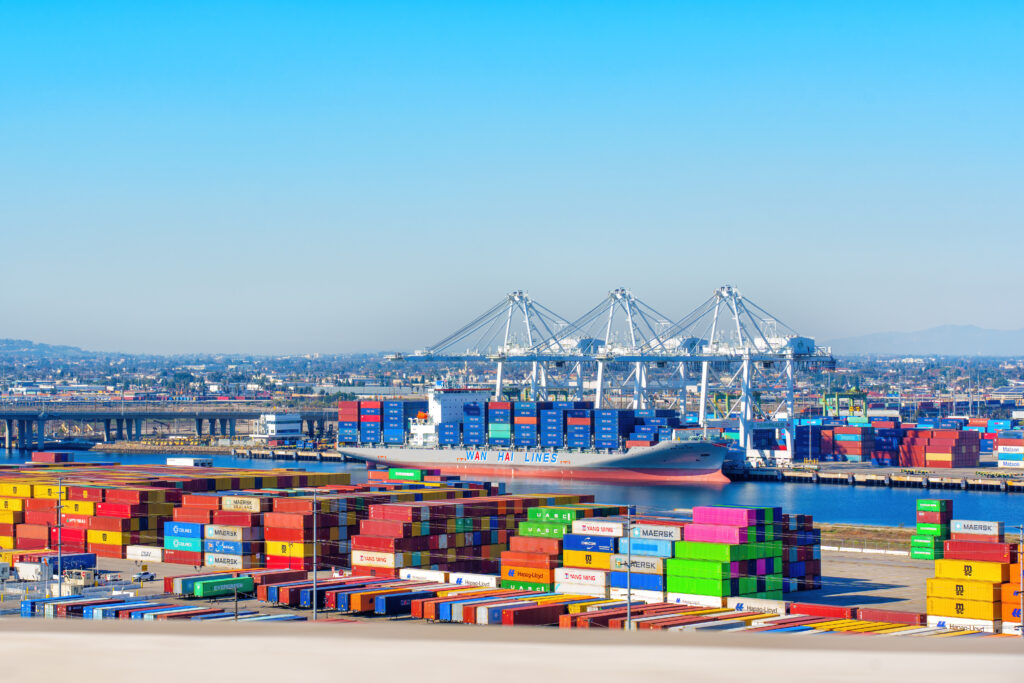Nearshore News: Trump Escalates EU Tariffs, Stellantis Bleeds Billions, Holiday Retailers Scramble and Robots Gain Ground

In the span of a few days we’ve seen President Trump threaten steeper tariffs, an automaker bleed billions, retailers scramble to salvage the holiday season, and robots quietly increase its head-count on factory floors. The stories below trace how those forces collide, and what they might mean for prices, jobs, and the pace of innovation in the months ahead.
Nearshore News Summary:
- President Trump is demanding a 15%-20% minimum tariff on all EU goods. The EU had proposed to maintain a 10% baseline and reduce car tariffs, but Trump rejected the offer and remains firm on a 25% auto tariff. (Financial Times)
- Stellantis, the maker of Chrysler, Jeep and Ram vehicles, reported a $2.7 billion loss for the first half of 2025, attributing much of the damage to auto tariffs and related factory shutdowns. (NYT)
- Retailers typically finalize holiday orders by June, but fluctuating tariffs have made planning much more complicated this year. (ABC News)
- Physical and Embodied AI are emerging as powerful technologies that allow robots to understand and navigate the real world. Amazon, having deployed one million robots in 12 years, exemplifies the accelerating shift toward automation. (Fast Company)
Donald Trump pushes for 15%-20% minimum tariff on all EU goods
Published: July 18, 2025
Source: Financial Times
President Donald Trump is demanding a 15%-20% minimum tariff on all European Union goods, escalating U.S.-EU trade tensions ahead of an August 1 deadline. The EU had proposed to maintain a 10% baseline and reduce car tariffs, but Trump rejected the offer and remains firm on a 25% auto tariff.
Key points:
- Tariff Demands Escalate: Trump now wants a 15%-20% minimum tariff on EU goods, rejecting the EU’s attempt to preserve the 10% baseline agreed in earlier talks.
- Auto Sector in Crosshairs: The U.S. refuses to reduce the 25% tariff on European cars, undermining a key EU concession and further straining negotiations.
- August 1 Deadline Looms: Trump has threatened a 30% tariff on all EU imports if no deal is reached, with the EU preparing multiple retaliation packages, including duties on $93 billion of U.S. goods.
- Divided EU Response: While the EU is signaling readiness to retaliate, internal divisions remain over how strongly to respond if the U.S. follows through.
- U.S. Gains and Market Impact: Despite fears of inflation, U.S. customs revenue surged by $50 billion in Q2, and markets have largely absorbed the tariff threats, though the S&P 500 dipped slightly on the news.
Stellantis Says Profit Plunged as Tariffs Began to Bite
Published: July 21, 2025
Source: NYT
Stellantis, the maker of Chrysler, Jeep and Ram vehicles, among many others, reported a $2.7 billion loss for the first half of 2025, attributing much of the damage to President Trump’s auto tariffs and related factory shutdowns. The carmaker saw a 13% drop in revenue and a 25% decline in U.S. vehicle deliveries. Stellantis warned it may soon raise prices as pre-tariff inventory runs out and inflationary pressures grow.
Key points:
- Major Losses Tied to Tariffs: Stellantis posted a $2.7 billion loss in H1 2025, partly due to $350 million in tariff-related costs and production stoppages.
- Factory Shutdowns Hurt Output: The company temporarily closed plants in Mexico and Canada in April, bracing for 25% U.S. vehicle tariffs that disrupted deliveries.
- U.S. Sales Plummet: Shipments to U.S. customers dropped 25%, contributing to broader revenue declines and pressure on dealer relationships.
- Price Hikes Likely: Stellantis has delayed price increases thanks to older inventory, but executives say higher prices are coming as tariff-free stock dwindles.
- Leadership and Market Challenges: Amid management turnover and rising competition from Chinese automakers in Europe, Stellantis is betting on new models like the revived Jeep Cherokee to rebound later this year.
Less selection, higher prices: How tariffs are shaping the holiday shopping season
Published: July 20, 2025
Source: ABC News
Retailers across the U.S. are bracing for a chaotic holiday season as shifting tariffs disrupt supply chains. With tariff policy in constant flux and key deadlines looming, many businesses are cutting back on orders, scrambling to lock in inventory, and adjusting prices—all while trying to maintain customer satisfaction during their most critical sales period.
Key points:
- Holiday Planning in Chaos: Retailers typically finalize holiday orders by June, but fluctuating tariffs have made planning nearly impossible. Companies like Balsam Brands are reducing catalog offerings due to shifting costs and product availability.
- Toy Industry Hit Hard: U.S. toy makers, which source 80% of products from China, faced delayed manufacturing and higher costs. Many fear they won’t be able to restock hit toys due to import uncertainty.
- Price Increases and Slimmer Selection: Small retailers are scaling back product lines or substituting goods to avoid passing major price hikes onto consumers. Some toys have seen wholesale cost increases of up to 20%.
- Tariff Timing Fuels Import Surge: With tariffs paused until August 1, retailers rushed to import goods, making June the Port of LA’s busiest on record. But executives expect inventory shortages and fewer gift options later in the year.
- Consumers Face Holiday Fallout: Shoppers will likely encounter higher prices, fewer choices, and limited restocks during the peak holiday season. Retailers are trying to manage expectations while preserving margins amid extreme volatility.
Forget chatbots. Physical and embodied AI are now coming for your job
Published: July 19, 2025
Source: Fast Company
Physical and Embodied AI are emerging as powerful technologies that allow robots to understand and navigate the real world. Unlike generative AI that powers chatbots, these systems enable machines to reason about and interact with physical environments. Amazon, having deployed one million robots in just 12 years, exemplifies the accelerating shift toward automation that could soon surpass human employment in many industries.
Key points:
- Amazon Leads the Robot Workforce Boom: Amazon has deployed over one million robots since 2012, suggesting bots could soon outnumber its 1.5 million human employees—setting a precedent for other companies.
- Physical AI Enables Real-World Reasoning: Physical AI allows systems to understand physical properties like friction and fluid dynamics, powering applications in infrastructure planning, urban development, and predictive maintenance.
- Embodied AI Brings Intelligence Into Motion: Embodied AI lives inside mobile robots—such as self-driving trucks or robotic arms—that can act in real-time using sensors like LiDAR and cameras to perceive and manipulate their environment.
- Real-Time Response is the Key Difference: Physical AI may run detailed simulations offline, while Embodied AI must respond instantly in live environments, especially in manufacturing and service tasks where timing is critical.
- Job Displacement Accelerating but Uneven: While LLMs still pose the greatest threat to white-collar work due to easy deployment, Embodied AI is catching up fast in physical industries. Companies are adopting robots not just for efficiency, but for cost-saving—since bots don’t take sick days, make mistakes, or ask for raises.
More blogs


